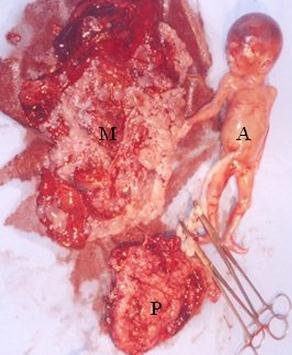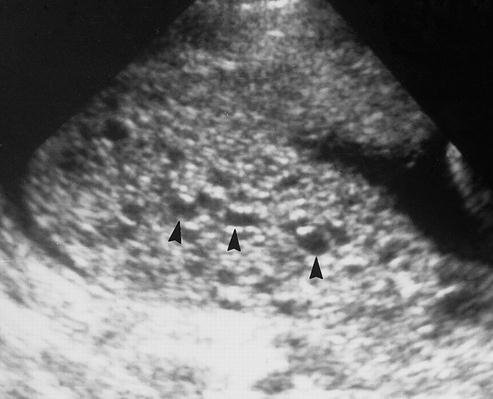Pregnancy is one of the glorious events of a woman’s life. It can be life challenging. As a woman, you can say that you are complete if you conceived a baby. Although in the realm of pregnancy, not all is normal and successful. Complications during pregnancy cannot be avoided. One of these complications is partial molar pregnancy.
Partial Molar Pregnancy is one of the types of molar pregnancy. It is a genetic anomaly in which two sets of chromosomes is fertilizing the egg cell instead of one set. Normally there are 23 chromosomes in one set. This abnormal pregnancy happens when there is a duplication mistake in the sperm’s chromosomes. Instead of a normal fetus, it is a mass that is growing inside the uterus.

Risk Factors
There are factors that can contribute to this pregnancy complication. Predisposing factors determined the prognosis of a pregnant woman. It includes:
- Previous history of molar pregnancy
- Previous miscarriage episodes
- Woman ages 35 years old and above
- Low in vitamin A
- Early pregnancy of woman in teenage years
- Woman who has B blood typing
- Woman of Asian descent
Causes of Partial Molar Pregnancy
A genetic structural abnormality has caused this condition. The egg cell that contains 23 chromosomes is fertilized by the sperm that also has 23 chromosomes in a normal pregnancy phase. In the event of this anomaly, the normal egg cell of 23 chromosomes is fertilized by sperm cell that contains 46 chromosomes. The excessive chromosomes can now formed a mass called a “mole”.
Signs and Symptoms of Partial Molar Pregnancy
- Nausea and vomiting
- Increase blood pressure
- Morning sickness
- Amenorrhea
- Nervousness
- Fatigue
- Abnormal heart rhythm
- Excessive sweating
- Vaginal discharges
- Uterus becomes large
- Pain in the pelvis
Assessment and Evaluation
In women who have this condition they should contact their health care provider and assess the following:
- Vaginal bleeding usually dark and scanty
- Uterine size should be measure (same with normal pregnancy)
- Pelvic exam must be done
- A blood test of Human chorionic Gonadotropin (HCG) must done if pregnancy exist
- Ultrasound is advise to view the size of the mole or embryo.

Ultrasonic view of Partial Molar Pregnancy
Treatment Modalities
- Dilatation and curettage of the embryo and placenta is done to treat this condition
- HCG level is still monitored for a period of 1 year after the surgery
- Methotrexate (an anti-cancer agent) is prescribe to treat GTD
- Vacuum aspiration is performed to suction the mole growing in the uterus
- Invasive procedure is also available like hysterectomy to remove the uterus, cervix, fallopian tube and ovaries
- Parts of the treatment anticipation is chemotherapy to prevent developing of cancer (a rare case)
- Non-invasive procedures is also available like prostaglandin analogue to induce abortion
Prevention and Supportive Management
- Contact your health care provider to give you medical advice after experiencing partial molar pregnancy
- Wait for a period of one year before getting pregnant (again)
- Provide emotional support to the patient. Let family members interact with the patient expressing grief and loss
- Used proper contraception for a year to prevent getting pregnant until the course of treatment is finish
- Refer couple for counselling
- Given enough time to grieve
- Encourage talking of feelings to partner and family members.
Frequently Asked Questions when Visiting your Health Care Provider
A woman should prepare some questions that she wanted to ask to her physician. So that there will be no room for miss-chances while you all have the time to do it so. Here is a common tips for you to ponder:
- Take note your last menstrual period (LMP).
- Elaborate all the signs and symptoms you’ve already encountered in relation to the disease condition.
- Remember previous medications taken.
- Let your partner (most recommended) or any family member go together with you in the check-up.
- Prepare all you queries.
- Check if all the recommended treatments are good for you.
- Take note of the danger signs you need to assess.
- Ask if how long you should wait before getting pregnant.
- Assess if you feel any pain in your womb.
- Ask for the necessary procedures you need to undergo before getting pregnant.
- List possible risks that you might encounter.
- Ask for the prognosis of your condition.
Chances of Getting Pregnant
After the period of one year, the woman can have a high chance of getting pregnant truly. Just comply the course of treatment and have regular check-up with your health care provider. As long as there is no more tissues and residues in your uterus, your chances is greatly high. Avoid activity that can easily stress you out. Eat nutritious foods and have regular exercise. A frequent ultrasound is also done to make sure your uterus is prepared to conceive again normally. Encourage partner in counselling.
Complications
Partial Molar Pregnancy can lead into more serious conditions. This condition is called Gestational Throphoblastic Disease (GTD). There is an abnormal growth of mass in the womb of a woman making her confuse if she is pregnant or not.
Percentage Risk
Out of 1,000 pregnancies occurred, there are about 20% of woman develops Gestational Thropoblastic Disease even if the mass had surgically removed.
References:
- http://www.mayoclinic.com/health/molar-pregnancy/DS01155
- http://my.clevelandclinic.org/disorders/Molar_Pregnancy/hic_Partial_Molar_Pregnancy.aspx
- http://pregnancy.answers.com/complications/partial-molar-pregnancy
- http://www.webmd.com/baby/tc/molar-pregnancy-topic-overview?page=2
Similar Posts:
- Choriocarcinoma – Symptoms, Prognosis, Treatment, Diagnosis
- Trichoepithelioma – Pictures, Treatment, Symptoms, Causes
- Vaginal Cancer – Symptoms, Signs, Pictures, Treatment, Causes
- Fibroid Tumor
- Cervical Intraepithelial Neoplasia
- Fallopian Tube Cancer – Symptoms, Prognosis, Survival Rate, Treatment
- Angiosarcoma – Prognosis, Symptoms, Treatment, Pictures, Causes






Leave a Reply